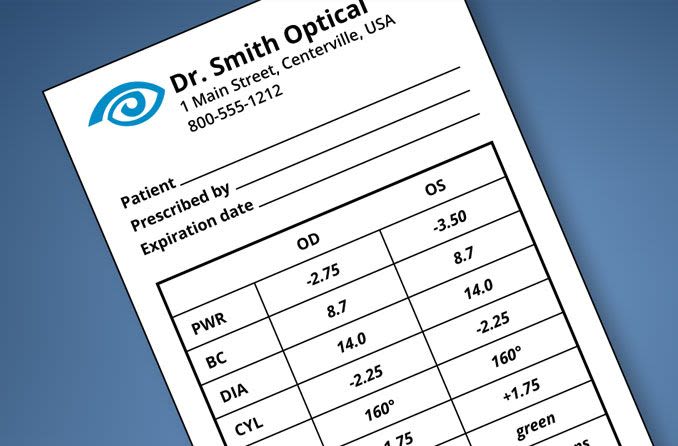How to read your colored contacts prescription? Your prescription contains information about your site and the type of correction you need to correct your vision. Only your ophthalmologist can prescribe contact lenses (brand, model, parameters). This prescription may seem incomprehensible to you when you see it for the first time, especially when dealing with colored contacts for astigmatism. To define the geometric shape, the level of correction, and the type of lenses.
Your ophthalmologist uses a variety of acronyms and technical abbreviations, of which here are some keys to understanding. Most ordinary people will be confused when they first see these technical data.
Here are the insights into the signs used in a contact lens prescription, for example, a colored contacts prescription.
To prescribe contact lenses for you, your ophthalmologist must define their main characteristics: their size, thickness, and corrective power. Information for your right eye is preceded by OD, and information for your left eye by OG. Want to know more? Just keep reading!
Radius (BC): This is the radius of curvature, which is the curvature of your cornea. It is used so that the lenses fit well in your eyes.
Diameter (DIA): This is the distance between the two edges of a lens. The diameter is expressed in mm.
Power (PWR) or Sphere (SPH): This is the corrective power needed to allow you to see perfectly. It is expressed in diopters (d) by a negative number (-) for far vision (myopia) and by a positive number (+) for near vision (hyperopia).
Cylinder (CYL): This is the corrective power needed to correct astigmatism. It is expressed in diopters (d) by a negative (-) or positive (+) number.
Axis (AX): This is the direction of the cylinder, expressed in degrees (between 0 and 180 °), which is necessary to correct astigmatism.
Addition (ADD): This is the corrective power needed to correct presbyopia. It is expressed in diopters (d) or by the terms “low,” “medium,” or “high.”
How long is a contact lens prescription valid for?
There is less age restriction to equip yourself with contact lenses than for glasses. So, if the patient is 16 years or older, the prescription is valid for five years. The optician can adapt the lenses to your eyesight during this period by carrying out a check-up. No need to go back to the ophthalmologist for that. For those under 16, this period is shortened to 1 year. This also applies to colored contacts for astigmatism.
The ophthalmologist can specify on the prescription that its period of validity is reduced and indicate how long it can be valid.
There is a large selection of contact lenses on the market, and most of them can be easily obtained online; Halloween-colored contacts, color contacts, and so on. Hopefully, with this guide, you will be able to choose the contact lenses you need, no matter whether you buy them online or offline.

















